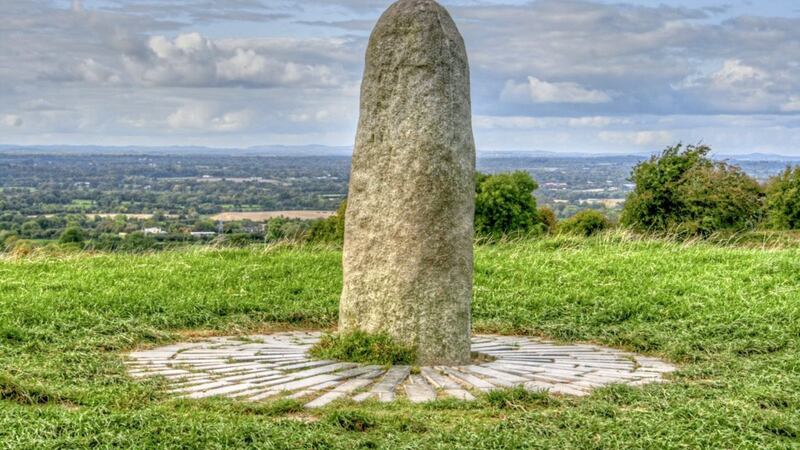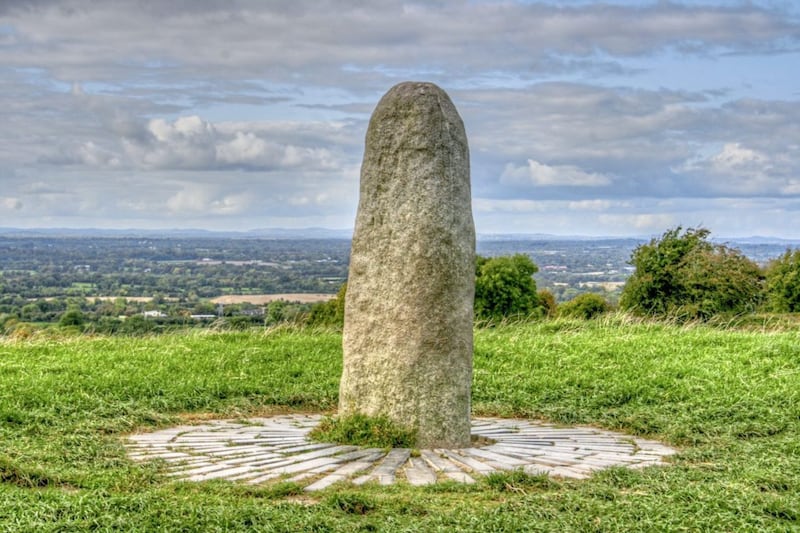IN a growling Dublin drawl that would have made the late Ronnie Drew sound like a sissy, the coach driver roared at the gangly Dutch backpacker.
“If I see you at that again you're off the tour. This is a sacred place – remember that,” he said, although his choice of words were slightly more… erm, choice.
The Dutchman – long-haired, hipster-bearded and at around 6ft 6ins towering over the squat coach driver – bristled but after looking round to his companions for moral support and realising that they had all backed away he muttered an apology and seemed to shrink slightly.
It wasn’t a church or a graveyard that had been desecrated by the international visitor but a standing stone on a hillside in Co Meath.
The phallic Lia Fáil (Stone of Destiny) stands at around four feet tall and was traditionally the coronation stone for the high kings of Ireland. The Dutch visitor had been acting the maggot and prancing around on top of it, balancing on one leg before jumping from it with a loud whoop.
The Hill of Tara rises 500 meters above the surrounding countryside and on a clear day you can see the Mournes to the north and the Wicklow mountains to the south. The name derives from an old Irish word 'Teamhair', which translates roughly as ‘high place’.
It’s oldest feature, the Hill of Hostages, is a small passage tomb which is believed to date from around 2,500BC, pre-dating by two millennia the arrival of the Celts in Ireland. It is an easy clamber from the usually overflowing car parks, past a former church which doubles up as a visitor’s centre for most of the year.
It can only be hoped that if US president-elect Donald Trump ever comes to Ireland on a state visit he is not brought to Tara as he would probably want to turn it into a golf course.
A series of small hillocks and troughs are spread out over the site, with the Hill of Hostages and the King’s Rath, on which Lia Fáil, stands the most prominent features.
According to legend the stone was placed there by the mythical Tuatha dé Danann – the people of the goddess – and it roars when a true king of Ireland touches it.
The sacrilegious Dutch tourist obviously had no royal Irish blood as the Lia Fáil kept a stony silence when he stood on it. Goddess knows what it will do if Donald touches it.
At the turn of the last century a group who described themselves as British-Israelites started digging up the Hill of Tara in a bid to find the Biblical Ark of the Covenant.
Their desecration drew the wrath of the poet WB Yeats and and his muse Maud Gonne, who apparently lit a bonfire and sang A Nation Once Again in protest. Its a pity the coach driver wasn’t around at the time.
Down the road past a gift shop, café and the superb second-hand bookshop run by Michael Slevin – whose beautifully produced books on the myths and legends of Tara are on sale in his shop – lies Caprach Cormac (Cormac’s Well).
But as with so many things about Tara, there is more than one version of history surrounding the holy well for it is also known as Tipra Bo Finne (the Well of the White Cow) and Deare Dubhe (the Well of the Dark Eye). Evocative names loaded with hidden histories, like the Hill of Tara itself.



